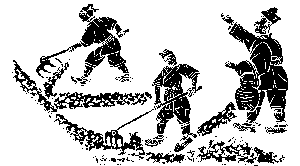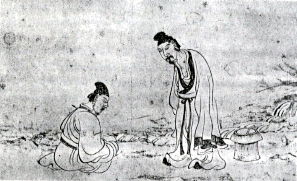

For at least 10,000 years, as early man changed from hunter-gatherer to the more settled living of agricultural economies, the practice of agriculture has undergone significant developments which predicated the evolution of civilization. Evidence points to the Fertile Crescent of the Middle East (about 9,500 BCE in the early Holocene period) as an early site with planned sowing and harvesting of plants that had previously been gathered in the wild. In 2015 archaeologists in present day Israel uncovered evidence of what they believe are the earliest known attempts at agriculture, more than 10,000 years before the generally recognised advent of organised cultivation. The study examined more than 150,000 examples of plant remains recovered from an unusually well preserved hunter-gatherer settlement known as Ohalo II, on the shores of a site the Sea of Galilee.
The Xianrendong and Diaotonghuan region in the Yangtze Basin of China's Hunan province show the dated 14,000 year-old upper excavation layer has Early Neolithic tools and rice pollen indicative of early cultivated rice paddies. Discerning the precise origin of agriculture remains problematic because the transition from hunter-gatherer societies began thousands of years before the invention of writing.
Independent early development of agriculture occurred in China and southern Asia, Africa's Sahel region, New Guinea and several regions of the Americas.
Some of the early primitive technology consisted of spreading seeds and extracating weeds, while harvesting when mature, using primitive wooden and stod tools.
Significant efficiency was realized with row planting and hoeing, which is documented in

Some of the earliest evidence for hoe cultivation and irrigation and drainage is found in the Daxi region of the middle Yangtze about 3000 BCE. A treatise from the third century BCE by the prime minister of the Qin state observes "IF the crops are grown in rows..." About the fifth century BCE, iron hoes were common in China, and intensive hoeing was yet another efficiency measure. Through the next several centuries, advances in the design and composition of iron hoes accelerated agricultural efficiency, and an adaptation led to the iron plow.
Of all the advantages China had for centuries over the rest of the world, the greatest may have been the ability to sustain its large and growing population through agricultural technology. Only about 10 percent of China's land is suitable for agriculture, so farming efficiency has historically been a concern as population increases. Rice, soybeans and other staples were farmed deliberately in rows, and the cultivation was efficient and adaptable to the use of tools.
The Chinese had invented the hydraulic-powered trip hammer by the 1st century BCE used to pound, husk,
and polish grain that otherwise would have been done manually. The Chinese also innovated the square-pallet chain pump by the 1st century CE,
powered by a waterwheel or an oxen pulling a on a system of mechanical wheels. The chain pump found use in public works to provide water for urban pipe systems,
lifting water from a lower to higher elevation in filling irrigation canals and channels for farmland.

The unique tradition of Chinese agriculture has been traced to the pre-historic Xianrendong Relics and Diaotonghuan Relics (c. 12 0000-7500 BCE). Chinese historical and governmental records of the Warring States (481-221 BCE), Qin Dynasty (221-207 BCE), and Han Dynasty (202 BC-220CE) eras allude to the use of complex agricultural practices, such as a nationwide granary system and widespread use of sericulture. However, the oldest extant Chinese book on agriculture is the Chimin Yaoshu of 535 CE, written by Jia Sixia. Over the past millennium, in fact, the revolution in Chinese agriculture has not been in mechanical or chemical technology but rather in the biological sphere: in crops, cropping systems, and land utilization. Under increasing population pressures, cultivation was forced to become more labor intensive and also to expand into the sandy loams, arid hills, and the upper reaches of lofty mountains. Lacking major technological inventions, the Chinese peasant had to expand the area under cultivation by finding suitable crops for inferior land.
Return to History of Chinese Invention and DiscoveryReferences
The Genius of China
3,000 Years of Science, Discovery and Invention
written by Robert K.G. Temple and published by Simon and Schuster, 1986
Currently out-of-print.Agricultural Archaeology 1998(1):206-211, by Zhang, Zhiheng,
Dept of History, Nanjing University, Jiangsu Province, P.R. CHINA .Cultural Relics Newspaper
Yuan, Jiarong, March 3, 1996, vol. 8, 1st ed.Timing and Rulership in Master Lü's Spring and Autumn Annals (Lüshi Chunqiu)
compiled by the prime minister of the Qin State, Lu Buwei in 239 BCE, as chronicled and translated in
Journal of Chinese Philosophy, Volume 31, Number 2, June 2004 , pp. 305-309,
Blackwell Publishing.